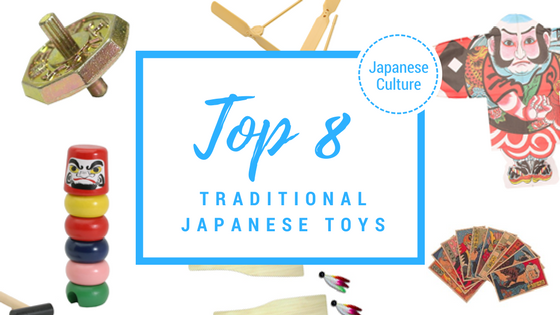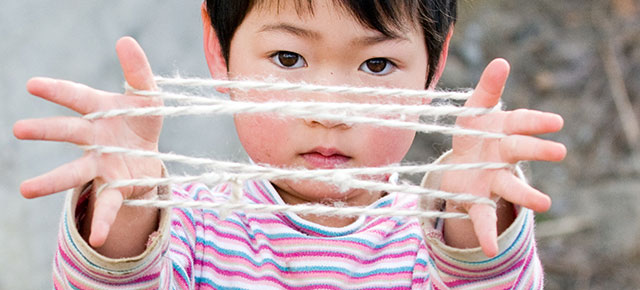
Over the years technology has been growing fast. Nowadays, instead of going out and being active some people choose to spend time on their phones browsing the internet and playing games.
Here are our top 8 traditional Japanese toys that you can enjoy with your family.
1. Taketombo (Bamboo-copter)
Taketombo is a toy helicopter rotor that flies up when its shaft is rapidly spun. It is said to be created in the Edo period by Hiraga Gennai, but it may have been played with since ancient times since similar wooden parts were found in a site dating back to the Nara period.
2. Tako (Kite)
It is thought that kites were first introduced to Japan by Buddhist monks who came from China in the Nara period (710-794 CE).
There are many different styles and types of kites, in fact, each region of Japan has their own characteristic shape. The decoration often depicts characters from Japanese folklore or have some religious or symbolic meaning.

3. Beigoma (Japanese Spinning Tops)
A small but pointy shaped toy about 3cm in diameter. It is spun by wrapping a thin 60cm cord around it, then throwing it while releasing the cord to spin it onto a surface. The thrower aims it at another beigoma to try to knock it out of the playing area. The loser is the player whose spinning top stops spinning first or is knocked outside the area. If spun correctly it makes a humming sound.

4. Hanetsuki (Japanese Badminton)
Hanetsuki is a Japanese traditional game, similar to badminton without a net, played with a rectangular wooden paddle called a hagoita and a brightly colored shuttlecock. Often played by girls at the New Year, the game can be played by any gender in two fashions: by one person attempting to keep the shuttlecock aloft as long as possible, or by two people batting it back and forth. Players who fail to hit the shuttlecock get marked on the face with ink. Traditionally, the longer the shuttlecock remains in the air, the greater protection from mosquitoes the players will receive during the coming year. Although Hanetsuki is not as popular as it used to be, decorative hagoita are commonly sold throughout Japan.

5. Daruma Otoshi
The wooden toy is made up of five stacking pieces, on top of which sits the main piece, the Daruma. The object of the game is to use the mallet to knock out the pieces under the Daruma one by one without toppling the Daruma.

6. Menko
Menko is a Japanese card game played by two or more players. It is also the name of the type of cards used to play this game. Each player uses Menko cards made from thick paper or cardboard, printed on one or both sides with images from anime, manga, and other works. A player's card is placed on the hardwood or concrete floor and the other player throws down his card, trying to flip the other player's card with a gust of wind or by striking his card against the other card. If he succeeds, he takes both cards. The player who takes all the cards, or the one with the most cards at the game's end, wins the game (Click here for more details).

7. Ayatori
Take a string about 120 cm long, and tie the ends together to make a loop. The object is to make shapes with the string, using your fingers. Two people can play, or you can do ayatori alone. When competing, one player holds the string in a certain shape, and the other takes that string while making a different shape. The person who makes a mistake and ruins the intended shape loses. The shapes can be enjoyed for their fanciful beauty. Some people try ayatori to make something that will surprise friends.

8. Kendama
The game is basically played by tossing the ball and attempting to catch it in one of the cups or to spear it with the point of the stick. Although it may sound simple, there are loads of specific techniques for doing so.

These are our top 8 traditional Japanese toys, let's put aside the gadgets and have fun with our family this weekend! Didn't find the traditional Japanese toy you were looking for? No problem, with ZenMarket you can order from virtually any Japanese online store (with a few exceptions), and we will deliver to almost everywhere in the world.

